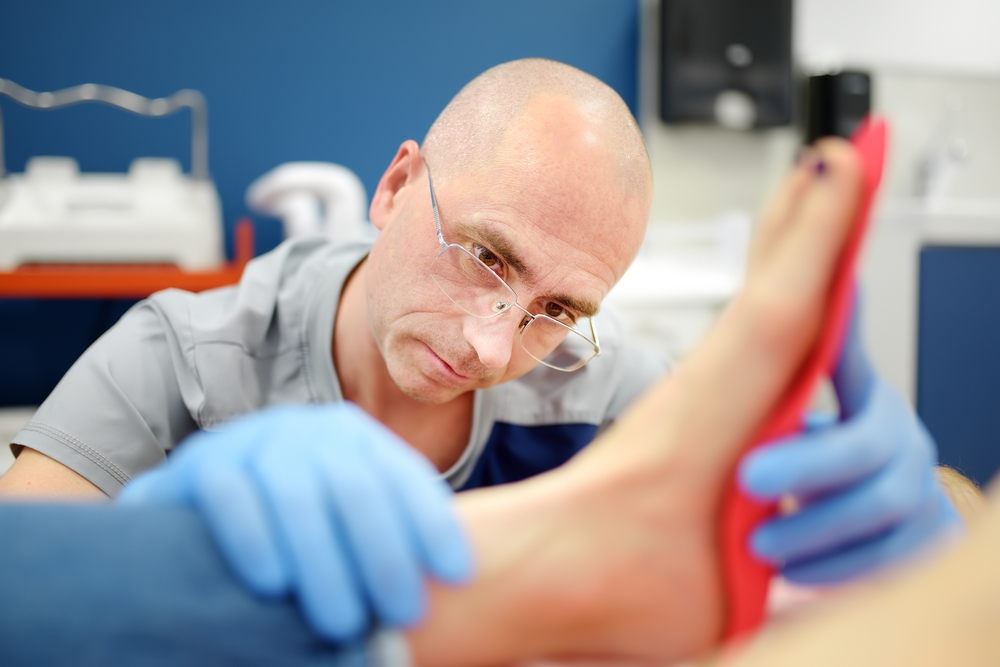Running is an excellent way to stay fit, but the repetitive impact can take a toll on your body, especially your feet and lower limbs. While some muscle soreness is normal, persistent pain can signal an underlying issue that could lead to a serious injury. This is where the specialized field of sports podiatry in preventing injuries in runners becomes essential. By focusing on the unique biomechanical demands of running, a sports podiatrist can identify risk factors and implement effective sports podiatry prevention strategies. Understanding how your feet function during a run, the first step toward a long and injury-free running journey is. Get a consultation with the best Podiatrists in Brooklyn.
What is Sports Podiatry and How Can It Help Runners?
Sports podiatry is a specialized branch of medicine focused on the diagnosis, treatment, and prevention of foot and lower limb injuries related to athletic activity. Unlike general podiatry, a sports podiatrist has a deep understanding of the biomechanics of specific sports, like running. They analyze how your body moves and how forces are distributed through your feet and legs with every stride.
For runners, this expertise is invaluable. A sports podiatry doctor doesn’t just treat existing injuries; their primary goal is to stop them from happening in the first place. They do this by evaluating your gait, foot structure, and footwear to create a personalized plan that addresses your unique needs.
Comprehensive Biomechanical Assessment
The cornerstone of sports podiatry is the biomechanical assessment. This detailed evaluation goes far beyond a simple look at your feet. It often includes:
- Gait Analysis: Using video technology, a podiatrist watches you run on a treadmill to analyze your foot strike, stride length, and overall running form. This helps identify subtle inefficiencies or imbalances that could lead to overuse injuries.
- Foot Structure Evaluation: The podiatrist will examine your arches, toe alignment, and joint mobility to understand how your foot is built to handle impact.
- Pressure Mapping: Advanced tools can measure the pressure distribution across the bottom of your feet as you walk or run, highlighting areas of excessive stress.
Key Sports Podiatry Prevention Strategies for Runners
A proactive approach is the best way to avoid common running injuries like plantar fasciitis, Achilles tendinopathy, and shin splints. Effective sports podiatry prevention strategies are tailored to your individual biomechanics and running goals.
Custom Orthotics and Footwear Recommendations
One of the most effective tools in a sports podiatrist’s arsenal is the custom orthotic. These are not the same as the generic insoles you find at a pharmacy.
- Custom Orthotics: After a thorough assessment, a podiatrist can prescribe custom-molded orthotics that are designed to correct your specific biomechanical faults. They can help control overpronation (foot rolling inward), support high or low arches, and improve shock absorption. By optimizing foot function, orthotics reduce strain on your joints and soft tissues.
- Footwear Advice: The running shoe market is vast and often confusing. A sports podiatrist can cut through the noise and recommend the best type of shoe for your foot type and running style. They will consider factors like cushioning, stability, and heel-to-toe drop to ensure your footwear supports, rather than hinders, your performance.
Strength and Conditioning Programs
Weakness or imbalance in the muscles of the feet and lower legs is a major contributor to running injuries. A podiatrist can design a targeted strengthening program to address these deficits. This may include exercises to improve:
- Foot Core Strength: Strengthening the small intrinsic muscles within your feet to provide better arch support and stability.
- Calf and Achilles Flexibility: Stretching and strengthening exercises to prevent tightness and reduce the risk of strains.
- Hip and Glute Stability: Strong hips and glutes are crucial for maintaining proper running form and reducing stress on the lower legs.
Injury Management and Load Modification
Even with the best prevention plan, injuries can sometimes occur. A sports podiatrist is skilled at diagnosing the root cause of the injury, not just treating the symptoms. They will provide a clear recovery plan that may involve rest, physical therapy, and a gradual return-to-running schedule. A key part of this is load management—adjusting your training intensity and volume to allow tissues to heal and adapt without being overloaded.
When Should a Runner See a Sports Podiatrist?
You don’t need to wait for an injury to benefit from sports podiatry. Consulting a podiatry doctor is a smart move for any runner who is:
- New to Running: Establishing good habits and addressing potential issues from the start can set you up for success.
- Increasing Mileage or Intensity: As you train for a longer race, the demands on your body increase, making you more susceptible to injury.
- Experiencing Nagging Pains: Don’t ignore persistent aches in your feet, ankles, or shins. A podiatrist can identify the cause before it becomes a major problem.
- Looking to Improve Performance: By optimizing your biomechanics, a sports podiatrist can help you run more efficiently, which can translate to better race times.
Invest in Your Running Future
Running should be a source of joy and health, not a cycle of pain and frustration. Sports podiatry in preventing injuries in runners offers a proactive and scientific approach to foot and lower limb health. By working with a qualified sports podiatrist, you can gain a deeper understanding of your body, correct underlying biomechanical issues, and implement effective prevention strategies. Taking this step is an investment in your longevity as a runner, helping you stay on the road and achieve your goals for years to come. If you are serious about running and want to minimize your risk of injury, consider consulting a sports podiatry specialist. At Doral Health & Wellness, we have Podiatrists with extensive education and expertise. If you’re ready to take the next step in managing your pain, we recommend consulting with our healthcare provider to explore the right treatments or therapies for you. Always listen to your body and adjust your daily routine to prioritize your well-being. It’s not a good idea to put off seeing Foot Doctor Brooklyn until you are in a lot of pain. Our address is 1797 Pitkin Avenue, New York, NY 11212. To make an appointment, please call + 1 718 367 2555 or send an email to info@doralhw.org.






